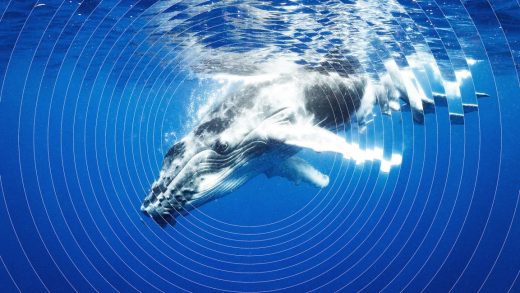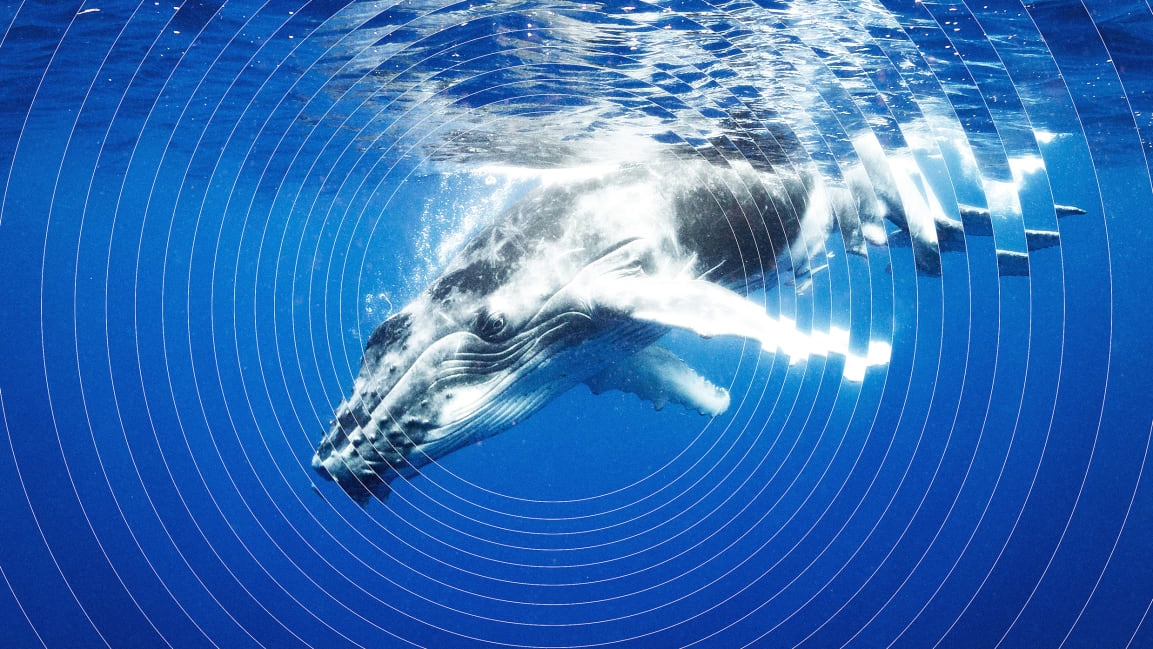Climate change is speeding up sound in the ocean. That’s bad for marine animals
For decades, the temperature of the Earth’s oceans has been rising. At the near-surface level, water has warmed by 0.14 degrees Fahrenheit per decade since 1901, a rate that’s accelerated over the past thirty years. Warmer oceans, induced by climate change, have spelled harm for marine life. They’ve killed fish, eradicated breeding grounds, and bleached coral reefs—eliminating critical food sources for organisms, and producing effects all the way up the food chain.
Adding to that list of dangers, a new study suggests that ocean warming could also accelerate the speed of sound underwater, threatening a fragile balance of noise that many marine species require to carry out essential communication for survival. Modeling a new future “soundscape,” researchers found this effect across the world’s oceans, but particularly in two glaring hotspots: the northwestern Atlantic, and the Greenland Sea. They predicted that the phenomenon could contribute to “the impending risk of biodiversity loss at global scale.”
Based on physical principles, sound travels faster in warmer water, because molecules in fluids have more energy to move more quickly, and allow sound to pass through faster. In these higher temperatures, sounds also last longer before they fade away. But this study is the first time scientists have produced an estimate of ocean speed sound on a global scale, based on future climate predictions, and explored marine mammals’ vulnerability to those sonic changes.
The “ocean soundscape” is an ecosystem of underwater sounds, what the researchers call a “cacophony of vibrations” that includes organism activity, waves and cracking of ice, ship movement, and resource extraction. Ocean organisms are used to this specific flutter of audio activity. Many rely on the delicate soundscape to carry out their survival needs, including feeding, finding mates, migrating, fighting, and avoiding predators—and warning others about them.
The team of scientists in Canada and Italy used climate projections based on a “high-emissions scenario” that would transpire if we continue at the same rate of releasing greenhouse gases, and modeled the soundscape of future oceans in 2100. They found there’d be “major variations” in sound by the end of the century in most seas, including 1% increases in sound speed in the southern Caribbean Sea, Gulf of Mexico, and Arctic Ocean.
Most significantly, they found two “acoustic hotspots,” where the average speed of sound could increase by more than 1.5%, or 55 miles per hour, over the current speed, which at 50 feet is about 3,250 miles per hour in polar regions, and 3,400 miles per hour in equatorial areas. One is an area of the northwestern Atlantic, east of Newfoundland, a “peculiar region” where warm and cold currents meet, says Alice Affatati, a bioacoustics and underwater noise researcher at Memorial University of Newfoundland and Labrador. In both this spot and the other, the Greenland Sea, marine life could experience “substantial changes.”
As an example, the researchers modeled the sound patterns of one particular animal: the North Atlantic right whale, a critically endangered species of which only 350 are thought to exist. Cetacea, the scientific name for whales and dolphins, employ sound a lot, including echolocation, whereby they emit sonar-like radars to locate themselves and discover what’s in their surroundings. “If that gets distorted, it might have an impact on their feeding habits,” Affatati says.
The team modeled the future “up-call” of the right whale, and found that the sound at 50Hz directed to another right whale would travel further, and faster, in a warmer ocean. Though they chose this species as an example, the researchers say that animals at “many trophic levels” would be affected; both those hotspots are areas of high biodiversity. If thrown off by the sound shifts, organisms may also decide to migrate away from their natural habitats, impacting the entire food web.
The study assumes that animals would not be able to change their vocal abilities, but Affatati says it’s possible that animals could evolve by adapting to new soundscapes. Some cetaceans do modify their frequencies if faced with noisy backdrops. And a past study showed that, in response to increased whaling, blue whales have lowered the frequencies of their “songs” since the 1960s by 31%, as they must cover more space due to declining populations.
All this suggests that other sounds, namely those caused by human activity, would also travel faster, representing another threat. They could interfere with soundscapes by introducing “acoustic pollution,” whereby they mask other sounds that animals need to hear. Affatati uses the analogy of asking a friend at dinner to pass the salt: if there’s no background noise, it’s likely they’ll hear; if 20 others at the table are chattering, they might not.
Shipping noise in particular is increasing. In the Greenland Sea hotspot, along with other Arctic areas, melting ice is producing opportunities for new commercial shipping routes. “So, these areas will experience more even more change,” Affatati says. Whales that dive deep to hunt can also get confused by ships’ sonar noises, which in the past have caused embolisms, beaching, and exposure to shark attacks.
The team’s research could help inform conservation and sustainable management policies needed to protect biodiversity. Crucially, Affatati notes that if we act on climate change by reaching emissions reduction targets, this future soundscape distortion may not occur. But there are many interacting variables among human and animal activity to consider in further research. “We don’t know,” she admits. “We don’t know what will happen in 100 years.”
Fast Company , Read Full Story
(55)



